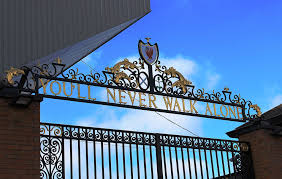By David Owen
February 15 – Liverpool’s record year resulted in sharply higher salaries for staff and directors.
The club’s accounts for the twelve months to end-May 2018, which have now arrived at Companies House, show that the year in which the Merseysiders became the first football club in history to report an annual pre-tax profit of over £100 million also saw overall staff costs jump from £208.3 million to £263.6 million.
This was partly explained by a big increase, from 744 to 837, in the number of employees. However, the club also acknowledged “higher salary and overhead costs as a result of progressing to the Final of the UEFA Champions League competition”.
Directors’ remuneration also bounded up from £1.65 million to £2.28 million. Within this, the highest-paid director’s remuneration climbed an enviable 45% from £914,000 to £1.33 million.
The accounts also show that the US-owned club took advantage of its bumper year to pay down debt. The amount owed under secured bank loans dipped from £73 million to £56 million.
Similarly, the sum outstanding under an inter-company loan used to fund the recent stadium expansion fell from £109.9 million to £99.9 million. The nominal interest rate on this is set at 2.44%.
As previously explained, the historic scale of the club’s £125.1 million pre-tax profit was attributable largely to transfers, in particular the lucrative sale of Brazilian playmaker Philippe Coutinho to Barcelona.
The full accounts for the Liverpool Football Club and Athletic Grounds Limited corporate entity now reveal that the precise amount attributed to disposal of player registrations in the year came to £123.9 million. This compared with an operating profit little changed from the previous year, in spite of the Champions League prize money, at £7.28 million.
The player disposal figure amounts to a particularly clear demonstration of how clubs are able to benefit from the asymmetry of the way in which transfers in and out are accounted for.
The consolidated cash flow statement shows that, while the Reds received just under £105 million from player sales, they spent over £154 million on replacements. This latter sum, though, is generally amortised over the length of each player’s contract.
Recent inflation in the market for players suggests that these big non-operating gains will become increasingly common in the short-term future. With domestic broadcasting income for Premier League clubs expected to rise much more slowly than of late in the next three-year cycle, these relatively easy accounting gains on transfers may, in effect, offset increasingly widespread operating losses.
Contact the writer of this story at moc.l1713954938labto1713954938ofdlr1713954938owedi1713954938sni@n1713954938ewo.d1713954938ivad1713954938

